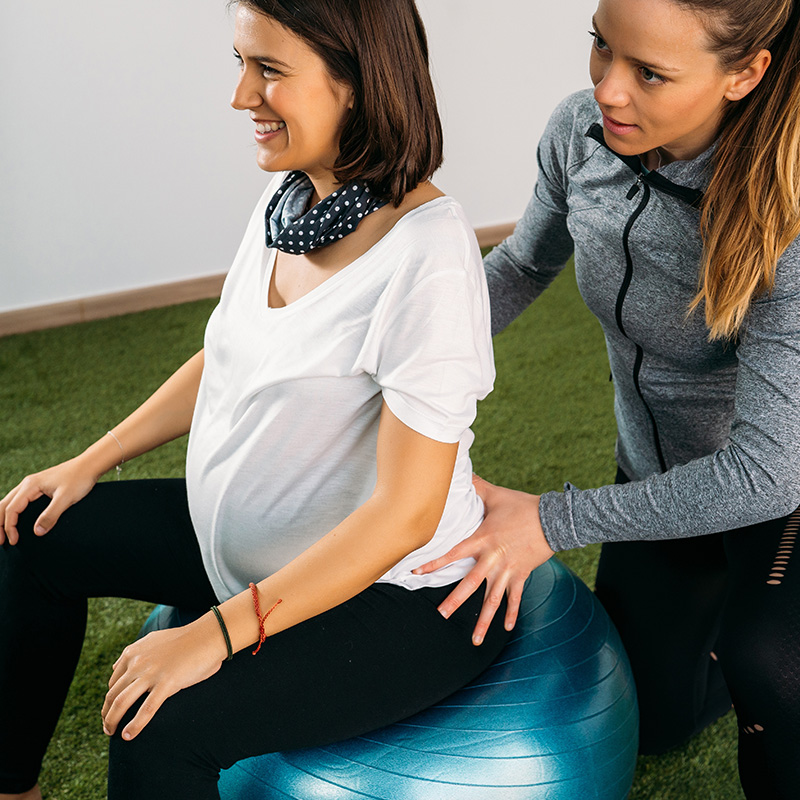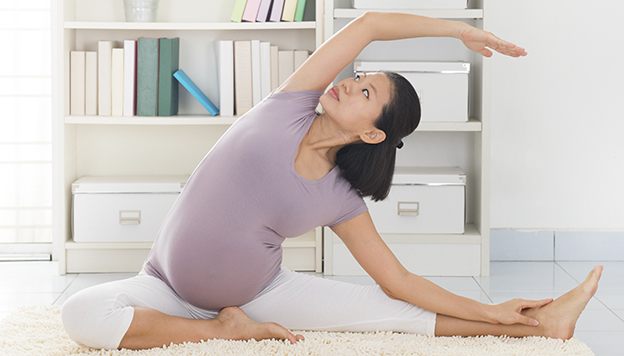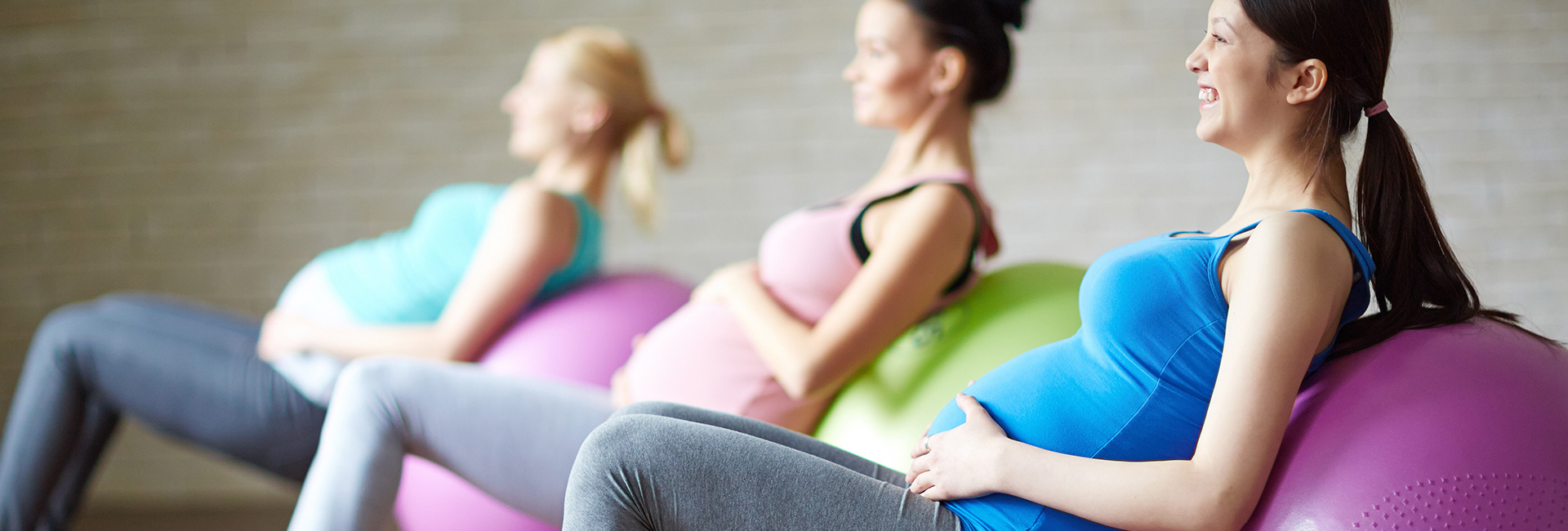Musculoskeletal issues arising from pregnancy
As your body changes and accommodates the needs of your growing baby, you may experience discomfort and aches and pains. Physical therapy is an effective way to help you manage your pain and can offer you a variety of ways to make your pregnancy more comfortable.
During your pregnancy, especially in the third trimester, your back may start to feel uncomfortable. This can be due to Relaxin (a hormone released during pregnancy), which causes the ligaments to be a little lax and can pull the lower back and pelvis in different directions, putting strain on different areas and causing pelvic, hip, or back pain. This can also be due to the pressure of the baby, especially if you are having multiples.
Other musculoskeletal issues that can arise during pregnancy are nerve compression syndromes, such as carpal tunnel, tendonitis, circulatory problems, spinal problems, or pelvic joint pain (such as osteitis pubis, coccyx/tailbone pain, groin pain, or sacroiliac pain).
Some treatments in physical therapy can address these aches and pains during your pregnancy. There should be no modalities used, such as ultrasound or electric stimulation, as those are contraindicated with being pregnant. However, there are many other treatments that can help. The first and most important are stabilization exercises, which include the core and pelvic floor muscles that help to stabilize the pelvis and lower back during movement. Some women are nervous to exercise during pregnancy, but it is very safe. According to the American College of Obstetricians and Gynecologists (ACOG), it is suggested that women should exercise 3-4 times per week for 15 minutes at a time, at a heart rate of 140 beats per minute. Exercise can include walking, yoga, swimming, and pelvic floor/core exercises.
The pelvic girdle is a complex ring of joints, ligaments, and muscles. The three main bones of this region — two ilium and the sacrum — meet together to form three joints. These areas are the pubic symphysis and two sacroiliac joints. These joints have very broad-based surfaces that allow them to have some movement and transfer large loads placed on the joints during activity.
In order for these bones to have some movement between one another when we walk, bend, and move the way we do, they must have an outside force to stabilize them. This stabilizing force is made up of the ligaments and muscles that control the amount of movement. Stabilization by the muscles is provided by four central muscle groups, which include the pelvic floor muscles, multifidi, transverse abdominis, and psoas major. If these muscles or ligaments are not working properly, exercise will help. In addition, a sacroiliac belt may help to stabilize the lower back.
Prior to labor, there are a few different treatments that can be done to make the delivery faster, not as painful, and easier overall. Those treatments include perineal massage and birthing positions with use of EMG.
Perineal massage is the gentle stretching and massaging of the skin between the anus and vagina (perineum) during the last few weeks of pregnancy. This massage has been shown to reduce the incidence of episiotomy and perineal tears during birth. The benefits of doing the massage are that the skin becomes more supple and elastic, which reduces the possibility of perineal tearing or an episiotomy. The massage prepares you for the feelings of pressure and stretching when your baby's head starts to crown. Having an idea of what these sensations are like enables you to relax, which can lead to a quicker birth. Tension will delay your baby's descent. Perineal massage during labor helps to ease the tissues around the baby's head as it is crowning and benefits both mother and child. This area is very sensitive during birth, so it is often more helpful for the mother to use perineal massage prior to labor.
Technique for perineal massage:
The following directions are for the expectant mother. But partners can take their cue from this as well.
- Wash hands, and find a relaxing place to do the massage (bathroom, bedroom, wherever you are comfortable)
- Sit in a comfortable position (a warm bath or warm compresses on the perineum for 10 minutes before massage may help with relaxation)
- Put a water-soluble lubricant (KY Jelly, etc.) or Vitamin E oil on thumbs and perineum
- Place thumb just inside of the vagina
- Press downward towards the rectum and to the sides at the same time until a very slight burning, stinging, or tingling sensation is felt
- Hold the pressure for about 1 minute
- Breathe deeply and slowly and try to consciously relax the muscles
- Keep pressing down with the thumb and slowly and gently massage back and forth over the sides of the vagina in a 'U' movement for 3 minutes
- Relax and repeat once
Another treatment that can be useful to the expectant mother is going over birthing positions with use of a Electromyography (EMG) test, which provides biofeedback that indicates muscle tone and function in the pelvic floor. Certain positions can be more comfortable and relaxing to the pelvic floor than others. A pelvic health physical therapist can use EMG biofeedback while testing different positions to find the best, most comfortable position for labor. This can be an important step to decrease pain and tearing during a baby's birth. Additionally, different positions are better than others when it comes to alleviating other pain (such as low back and neck) during labor.
After you have your baby, there are some treatments to ease pelvic floor pain and help it heal. If you tear or have an episiotomy, there is some scar management that can be done. You can work the scar with your fingers to decrease scar tissue and adhesions from forming. Using your finger just below the vagina, you can make circles on the scar or move it back and forth. You can also stretch it similar to how you performed perineal massage.
After giving birth, your pelvic floor and core muscles become very weak. It is essential to work on pelvic floor strengthening and stretching using proper body mechanics.
Pelvic floor strengthening includes Kegel exercises, where you contract your pelvic floor. Every time you bend over or lift something — two things that you likely do often with a new baby in your care, there is an increase in the intra-abdominal pressure in your abdomen, which places stress on your pelvic floor and can cause more problems, such as leaking.
Kegels are an essential exercise pre and post-partum in addition to other core and pelvic floor strengthening. Some additional exercises post-partum that will help strengthen the core are tummy tucks, heel slides, bridges, and pelvic tilts.
calderaheen1997.blogspot.com
Source: https://www.therapeuticassociates.com/your-physical-therapy-guide-to-pregnancy/




0 Response to "Can You Continue Physical Therapy When Pregnant"
Post a Comment